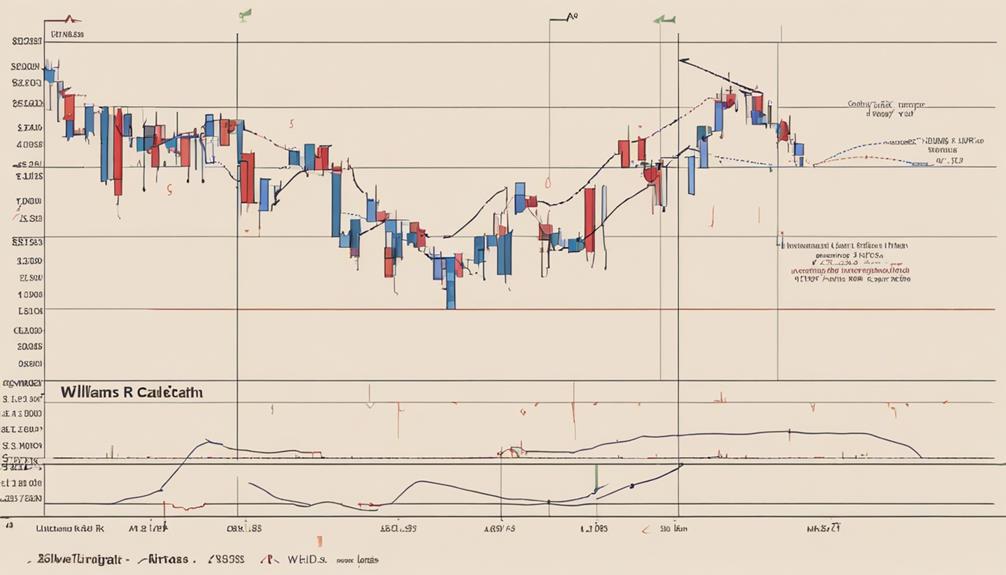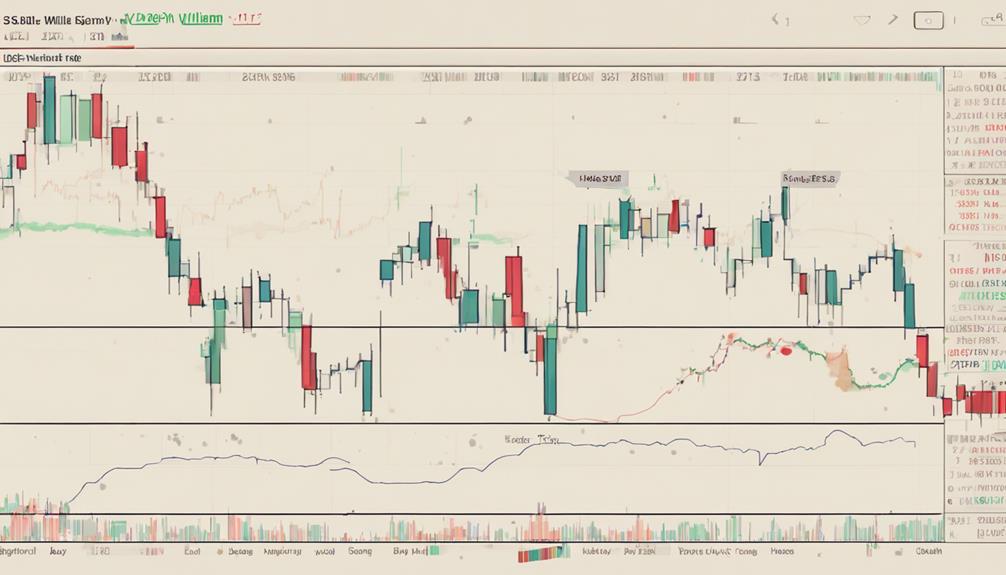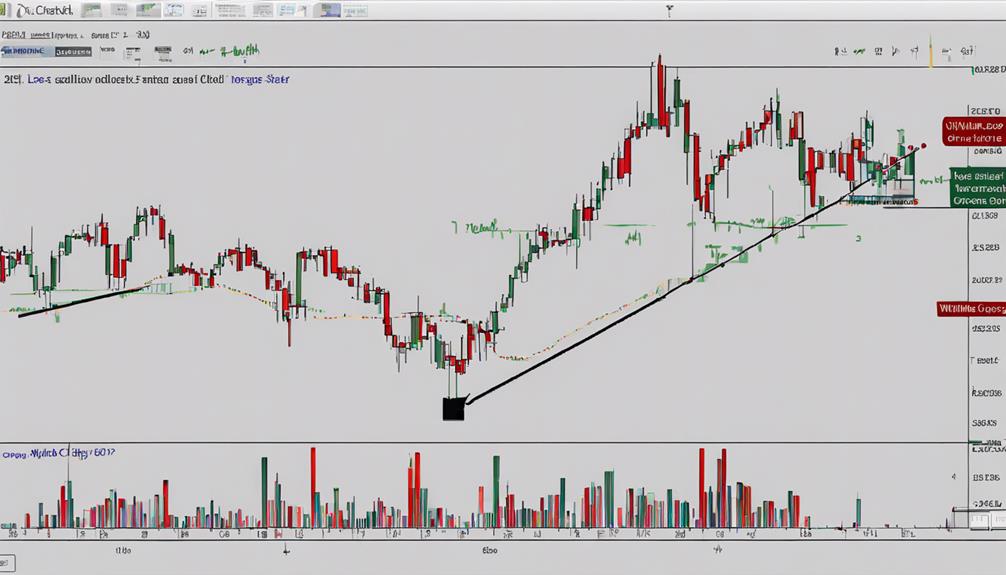Exploring the intricacies of the Williams %R Indicator can significantly enhance one's understanding of market dynamics and improve trading precision.
This guide provides a structured approach to deciphering the indicator's nuances, from its foundational principles to advanced trading strategies.
By unraveling the complexities of this renowned tool, traders can unlock a world of opportunities within the financial markets.
Understanding how to effectively navigate the Williams %R Indicator can be a game-changer for those seeking an edge in their trading endeavors.
Understanding the Williams %R Indicator
Understanding the Williams %R indicator facilitates enhanced market analysis and strategic decision-making for traders. This indicator provides insights into whether a market is overbought or oversold, helping traders anticipate potential reversals in momentum.
By interpreting the signals generated by the Williams %R values, traders can make informed decisions on entry and exit points in the market. Calculated over a 14-day period using the highest high, lowest low, and closing price, the Williams %R indicator ranges from 0 to -100. A reading of 0 indicates an overbought market, while -100 suggests an oversold market.
Common trading strategies involve buying when the indicator is above -80 and selling when it falls below -20. By understanding these dynamics, traders can develop effective trading strategies that capitalize on market inefficiencies and fluctuations.
The Williams %R indicator serves as a valuable tool for traders seeking to navigate the complexities of the financial markets with precision and confidence.
Calculating Williams %R Formula

The calculation of the Williams %R indicator involves comparing the highest high to the closing price and dividing the difference by the highest high minus the lowest low within a specified period. This process is essential in determining the momentum and potential overbought or oversold conditions in the market.
Here are five key points to understand the calculation of the Williams %R formula:
- The formula compares the highest high to the closing price.
- It then divides this difference by the highest high minus the lowest low.
- The resulting value is multiplied by -100 to adjust the scale.
- This calculation helps assess the current position of the closing price within the high-low range.
- Traders utilize the calculated Williams %R value to identify potential overbought and oversold conditions in the market, aiding in making informed trading decisions.
Implementing Williams %R in Trading

Utilizing the Williams %R indicator in trading allows investors to pinpoint potential market reversal points based on overbought and oversold conditions. By understanding the range-bound nature of Williams %R, traders can implement effective strategies.
When %R falls below -80, it indicates oversold conditions, suggesting a potential buying opportunity. Conversely, when %R rises above -20, it signifies overbought conditions, signaling a potential selling opportunity. These signals play a crucial role in guiding trading decisions within the market.
Traders often hold positions until opposite signals are reached to maximize trading opportunities. The Williams %R indicator is commonly used in conjunction with spread bets and CFDs for trading purposes due to its effectiveness in identifying market conditions.
Effective Williams %R Trading Strategies

When considering effective Williams %R trading strategies, key principles include identifying overbought and oversold conditions to inform decision-making in the market. The Stochastic oscillator, a momentum indicator, can complement Williams %R strategies by confirming potential market signals.
Here are five essential elements to enhance efficient trading with the Williams %R indicator:
- Utilize overbought and oversold levels (-20 and -80) for trading decisions.
- Interpret overbought conditions as bullish and oversold conditions as bearish signals.
- Hold positions until opposite signals are generated to optimize profits and minimize losses.
- Enhance trading flexibility by incorporating spread bets and CFDs into Williams %R strategies.
- Implement trading strategies based on Williams %R movements to identify potential entry/exit points effectively.
Tips for Utilizing Williams %R Indicator

For optimal utilization of the Williams %R indicator, strategic integration with complementary technical tools can enhance trading precision and decision-making effectiveness. Williams %R provides valuable insights into overbought and oversold conditions, with levels above -20 indicating overbought and levels below -80 signaling oversold market conditions.
Traders can utilize Williams %R to identify potential trend reversals, especially when combined with other technical indicators for confirmation before executing trades. By observing instances where Williams %R fails to breach the -20 or -80 thresholds, traders can anticipate shifts in market momentum, offering opportunities for timely entry and exit points.
Understanding how to interpret the overbought and oversold readings of Williams %R is crucial for making informed trading decisions. By incorporating this indicator into a comprehensive trading strategy, traders can leverage its insights to navigate market fluctuations effectively. Utilizing Williams %R in conjunction with other technical tools can significantly improve trading outcomes by enhancing the accuracy of market analysis and trade execution.
Are There Any Advanced Tips for Navigating the Williams %R Indicator?
When navigating Williams %R indicator, consider using additional indicators for confirmation. Understand the indicator’s overbought and oversold levels, and wait for a reversal confirmation before making a trade. Use other analysis tools to filter out false signals and improve your trading decisions when navigating Williams %R indicator.
Frequently Asked Questions
How Do You Use William R Indicator?
To use the Williams %R indicator effectively, traders analyze overbought or oversold levels. Readings above -20 suggest overbought conditions, while readings below -80 indicate oversold territories. Utilize these signals to identify potential trend reversals or continuations in price movements.
What Is the Best Setting for Williams %R?
The best setting for Williams %R depends on individual trader preferences, risk tolerance, and market analysis. While default values are -20 for overbought and -80 for oversold, traders may experiment with adjustments like -10 and -90 for finer price movement observations.
What Is the Formula for Williams %R?
The Williams %R formula, (Highest High – Close) / (Highest High – Lowest Low), measures the proximity of the closing price to the highest high over a specified period. This indicator ranges from 0 to -100, aiding in identifying overbought or oversold conditions.
What Is a Bullish Williams R Pattern?
A bullish Williams %R pattern emerges when the indicator surpasses -50, indicating a potential uptrend. It implies rising buying momentum and potential price appreciation. Traders may view this as a signal to enter or maintain long positions, considering additional confirmations for a stronger outlook.
Conclusion
In conclusion, the Williams %R indicator serves as a valuable tool for traders to analyze market momentum and identify potential trend reversals. By understanding its calculations, interpreting overbought and oversold conditions, and implementing effective trading strategies, traders can make more informed decisions.
Utilizing the Williams %R alongside other indicators can enhance trading strategies and improve overall market analysis. Its application can provide valuable insights into market dynamics and aid in predicting future price movements.
